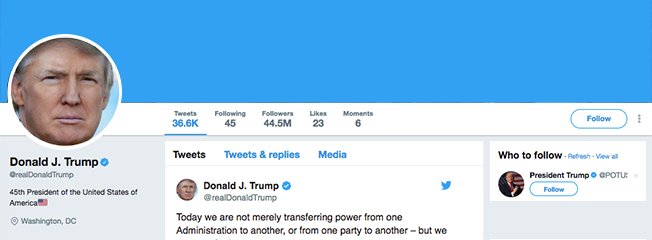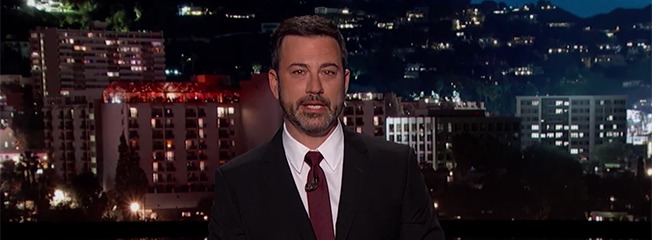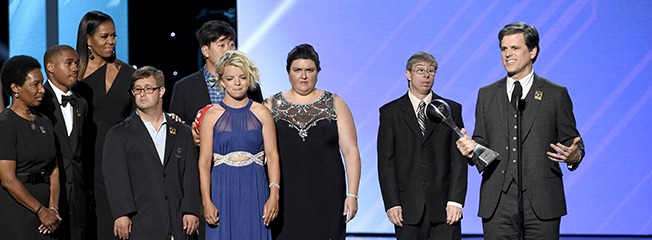Communication drives moments, and moments matter.
When we experience something bold, it jolts us to action, leaves a measured impact, ignites a collective memory, or empowers the afraid. These are the moments that punctuated 2017. These are the moments that changed the way we think or inspired us to act.
For twenty-one years, we have identified the top communication moments of the year – the highlights, the lowlights and the impact they yielded. This year is no exception. Communication matters now more than ever.
So, which communication moments stood out in 2017? And what can we learn from them?

1. The Power of Many: The #MeToo Moment, October 2017
Power corrupts. Absolute power corrupts absolutely. Unless...
Unless victims rise above the abuse, actions and threats to tell the stories that would sacrifice their own relationships, livelihood, reputation and future. Unless the voice of one brings courage to others. In October of 2017, it happened. With help from investigative journalists like Jodi Kantor, Megan Twohey and Ronan Farrow, powerful accounts of Hollywood heroines including Rose McGowan, Ashley Judd and Angelina Jolie gave rise to a collective voice. Supported by the work of activist Tarana Burke, the #MeToo moment illuminated the widespread, prevalent practice of sexual harassment and abuse across every industry. But this goes beyond a hashtag. #MeToo is a watershed moment because it is changing something...big. Moguls, actors, owners, business leaders, politicians, comedians and athletes, alike, were immediately ousted and distanced, finally sending a message of intolerance that will change the game.
So What: The biggest communication moment of the year came from truth, stories, and the boldness to dig deep and tell them (for many brave women, it was done at a great cost). Communicating and putting yourself out there takes tremendous courage. Be willing to take a risk and share something you’d rather keep close to the vest. Be bold, raise your hand, speak up - it might even start a movement.

2. The Power of One: JJ Watt's Appeal for Hurricane Help, August 27, 2017
A surprisingly important moment occurred the day after Hurricane Harvey landed on the Gulf Coast and wreaked havoc on Houston. NFL star JJ Watt of the Houston Texans made a fundraising appeal for $200K to help the communities and people of Houston rebuild and recover. Little did he know that his video appeal on Twitter would multiply more than a hundred-fold - as of September, it was well over $37,000,000. Talk about inspiring your audience to action! A man of humble confidence, Watt didn’t put himself in the front of his cause, but he positioned the people of Houston as most important to his heart.
So What: One person can make a difference – a big difference – when he or she is authentic and straightforward. Authentic appeals pack a punch. While it’s easy to get hung up on which specific words to use, sometimes a less-scripted ask yields better results because it’s more real. Plus, it helps to leverage the power of social media, and use it skillfully, to multiply the power of one into hundreds and thousands – even millions.

3. Remembrance vs. Reverence: Monumental Differentiation of History from New Orleans Mayor Mitch Landrieu, May 19, 2017
Amidst the many divisive moments that defined 2017, the removal of Confederate statues flared emotions, incited protests and also presented an opportunity to redefine the way we relate to our history. Mitch Landrieu, mayor of New Orleans, powerfully addressed the moment to shift perspective from reverence to remembrance. He found common ground in our humanity, asking, “Consider these four monuments from the perspective of an African American mother or father trying to explain to their fifth-grade daughter who Robert E. Lee is and why he stands atop of our beautiful city. Can you do it? Can you look into that young girl’s eyes and convince her that Robert E. Lee is there to encourage her? Do you think she will feel inspired and hopeful by that story? … When you look into this child’s eyes is the moment when the searing truth comes into focus for us. This is the moment when we know what is right and what we must do. We can’t walk away from this truth.” Change is hard. Changing something that is as emotionally charged as history and race seems impossible. Landrieu did - and it’s a speech for the ages.
So What: Aligning a team - especially on a tough, divisive topic - is how great leaders differentiate themselves from good leaders. Leading with a listener-focused message creates common ground, and it gets people to nod, saying, “Tell me more.”

4. Raise Your Glass: Pink’s VMA Video Vanguard Acceptance Speech, August 27, 2017
When Pink was presented with her award, people may have expected a standard acceptance speech: obligatory thank yous followed by some kind of edgy-yet-generic political opinion. She didn’t do either. Instead, she seized the opportunity to influence and deliver an important message about body image and gender. She spoke directly to her daughter, who was in the audience, and broadened the message to parents and children everywhere. Like other “moments” in this year’s list, with vulnerability and humor, she shared her own story about being bullied. She used her message of common ground and shared experience to draw others to the cause, rather than push them away and divide. She spoke with passion and purpose, and she used her moment to “help other people to change so they can see all kinds of beauty.”
So What: We’ve seen how stories help us relate to others, elicit emotion and motivate action. An equally important benefit is how it changes the way we deliver the message. We’re way more excited to share our stories than we are to walk through an analysis. That passion is contagious; it keeps your audience tuned in, and it strengthens connection.

5. A Whole New Medium: President Trump’s First Tweet in Office, January 20, 2017
From the moment that President Trump grabbed the @POTUS Twitter handle and began using it as his main platform, he opened a direct line of communication, changing the way that a world leader communicates with the world. DO NOT MISS THIS: The lesson here is about the medium, NOT the content of President Trump’s tweets. For better or worse, the president opened a public, real-time, direct communication channel in a way that’s never happened before. For the United States, it’s the 21st century’s unfiltered version of FDR’s “fireside chats,” which provided the opportunity for citizens to hear from the president directly. Like it or not, President Trump’s use of Twitter provides an unprecedented level of access and visibility that influences and shifts the mindsets of supporters and dissenters, alike.
So What: A direct line of communication is powerful. That doesn’t mean you have to use Twitter as your platform. We’d rather have a face-to-face conversation to discuss an important topic. Great business leaders use Town Halls, all-hands meetings, webcasts and video updates to let their teams hear it straight from the horse’s mouth. When done effectively, this provides leaders with an opportunity to boost transparency and trust throughout an organization, providing a conduit for influence.

6. Going to the Next Level: Jimmy Kimmel's Personal Story and Plea, May 1, 2017
The audience was undoubtedly expecting some hearty guffaws, but instead it was brought to tears. During the opening monologue of his late-night show, Jimmy Kimmel, teary-eyed and with a shaky voice, shared the story of his newborn son’s congenital heart disease, emergency open-heart surgery and subsequent treatments and procedures. He detailed how the moment of his son Billy’s birth shifted from joy and hope to panic and worry, “...they determined he wasn’t getting enough oxygen into his blood… It’s a terrifying thing, my wife is back in the recovery room, she has no idea what’s going on, and I’m standing in the middle of a group of very worried-looking people.” Kimmel used this powerful story to connect and drive home a strong Point Of View about healthcare, “If your baby is going to die and it doesn’t have to, it shouldn’t matter how much money you make. I think that’s something that whether you’re a Republican or a Democrat or something else, we all agree on that, right? … No parent should ever have to decide if they can afford to save their child’s life. It just shouldn’t happen. Not here.” In his vulnerability, Kimmel created a moment that mobilized action, using his personal experience to activate support.
So What: Logic makes you think, emotion makes you act. We often forget or set aside the power of emotion to inspire action. We naturally default to creating a great logical argument to make a point. Kimmel could have just given stats and cited research about pre-existing conditions. That would have made some people think pretty hard about healthcare, but the power of personal story elicits emotion that motivates change.

7. Championing Humble Confidence: Another Grand Slam Victory for Serena Williams, January 28, 2017
Despite being fierce on the court, Serena Williams’ first words after winning her 23rd Grand Slam at the Australian Open were words of gratitude. With a huge smile, she dedicated her win to her sister, Venus, for inspiring her to be the best player and admits that Venus is the reason she has worked so hard every step of the way. One of the best athletes of all time, Serena is a phenom to watch. And, yet, we cheer for her because of how she communicates. “To me, it’s being a champion, but not only by the way I play, but the things I do off the court as well,” she said. And it shows.
So What: Whether in business, politics or athletics, it’s essential to show humble confidence. This perfect blend of confidence and humility creates likability, attracts fans, enlists supporters and generates support. When people like you, they’re more inclined to follow you and respect you.

8. Life Happens: Professor Interrupted Live on BBC, March 10, 2017
Now for a memorable communication moment that added levity to all of our lives in 2017, the video interview where Professor Robert Kelly was live on the BBC when his two kids and wife interrupted during the live video feed. That’s right, *#%t happens… and for Professor Kelly, it just happened to be perfectly captured on video for people all across the world to watch with both delight and empathetic agony, over and over again. The episode ended up getting much attention, and they embraced the attention with incredible grace and understanding for what it was: life.
So What: Be relatable. Whether through our actions or our words, we can wield enormous power when we give others the chance to relate to us. More often than not, it’s easier to relate to an oops than a triumph. We’re now in a time where the lines between our personal and professional lives are blurred, and working from home is standard. So, we get it - and we can relate to the dog barking, a doorbell ringing and even the curious toddler interrupting. Similarly, we’ve experienced the same technical glitch or unplanned interruption in more formal meetings. When something happens, don’t be overly apologetic. Roll with it, and move on.

9. A Legacy of Likability: Eunice Kennedy Shriver’s Son Accepts Her Arthur Ashe Courage Award at the ESPYs, July 12, 2017
If you didn’t see Tim Shriver’s light, meaningful speech at the ESPYs this year, stop what you’re doing and watch all 6 minutes of it right now. His tribute, on behalf of his mother Eunice Kennedy Shriver, cheered the boldness of women, and it supported all athletes who compete, no matter their disabilities. From the beginning, Shriver oozes likability. With steadiness in his voice and lightness on his face, this warmth carries him throughout the speech. Once he gets through the critical thank yous at the beginning, Shriver gets real - showing passion, comfort and teaching us a bit of history in the process. It was a message of inclusion, fighting fear and discrimination.
So What: Research shows that when we meet people, warmth trumps competence as we seek to connect with one another. Likability engenders trust and can help influence others. After all, no one buys long term from someone whom they do not like. Simple behaviors like a smile, an open facial expression and extended eye communication can boost the emotional connection and rapport that you have with others.

10. Adding to the Mess: United Airlines CEO Oscar Munoz Makes a Bad Situation Worse, April 11, 2017
The “friendly skies” have never felt less friendly. After a United Airlines passenger was aggressively and forcibly dragged through the aisle and off the aircraft of an overbooked flight from Chicago O’Hare to Louisville, the video of the incident instantly went viral. CEO Oscar Munoz’ reply, however, was nowhere near as timely or as convincing. From his first defensive statement, where he said, “I apologize for having to re-accommodate these customers,” to his later, more heartfelt apology during an interview, Munoz failed to communicate with empathy to turn the tide of the shocking video. As CEO, he needed to step up and represent the company. It felt like he was making an apology because a PR advisor told him to do it. What a huge, missed opportunity to show the brand’s friendliness, resilience and grace.
So What: To be able to respond with candor under pressure is critical for any leader. When confronted with a tough situation, we can respond in two different ways: self-protection or empathy. Self-protection results in an immediate defensive posture, and comes across as arrogant and prideful, casting blame on others. Empathy requires that you consider another’s Point Of View and respond with humility instead. All of us have less public situations to deal with, and we can learn a lesson here.
Your brilliant assessment of THE best out of millions, is right on target. If we heed these lessons our world can become a better and more peaceful place. Thank you Bert!
Excellent! I especially liked the “So what” comments.